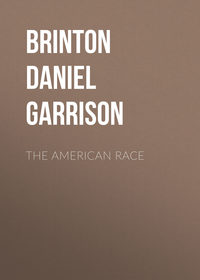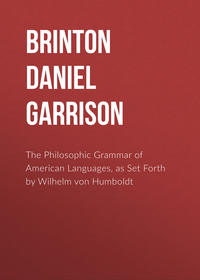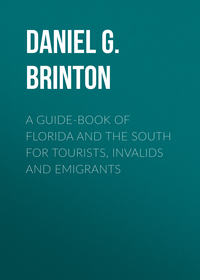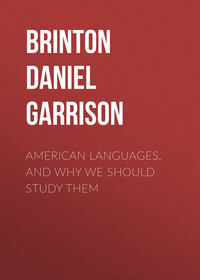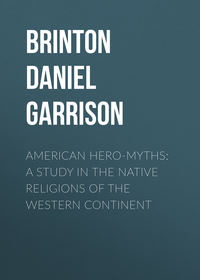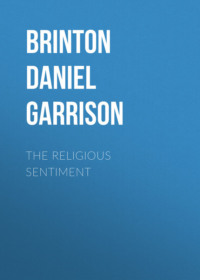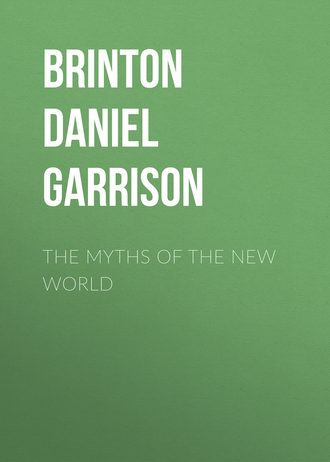 полная версия
полная версияThe Myths of the New World
217
Martius, Von dem Rechtzustande unter den Ureinwohnern Brasiliens, p. 28, gives many references.
218
Id. ibid., p. 61.
219
Le Livre Sacré des Quichés, Introd., pp. clxi., clxix.
220
Travels in Yucatan, i. p. 434.
221
Schoolcraft, Ind. Tribes, v. pp. 416, 417.
222
Mrs. Eastman, Legends of the Sioux, p. 161.
223
Rel. de la Nouv. France, 1634, p. 27; Schoolcraft, Algic Researches, ii. p. 116; Ind. Tribes, v. p. 420.
224
De Smet, Western Missions, p. 135; Schoolcraft, Ind. Tribes, i. p. 319.
225
Mrs. Eastman, Legends of the Sioux, p. 72. By another legend they claimed that their first ancestor obtained his fire from the sparks which a friendly panther struck from the rocks as he scampered up a stony hill (McCoy, Hist. of Baptist Indian Missions, p. 364).
226
Mrs. Eastman, ubi sup., p. 158; Schoolcraft, Ind. Tribes, iv. p. 645.
227
Waitz, Anthropologie, iii. p. 417; Müller, Am. Urrelig., p. 271.
228
On the myth of Catequil see particularly the Lettre sur les Superstitions du Pérou, p. 95 sqq., and compare Montesinos, Ancien Pérou, chaps. ii., xx. The letters g and j do not exist in Quichua, therefore Ataguju should doubtless read Ata-chuchu, which means lord, or ruler of the twins, from ati root of atini, I am able, I control, and chuchu, twins. The change of the root ati to ata, though uncommon in Quichua, occurs also in ata-hualpa, cock, from ati and hualpa, fowl. Apo-Catequil, or as given by Arriaga, another old writer on Peruvian idolatry, Apocatequilla, I take to be properly apu-ccatec-quilla, which literally means chief of the followers of the moon. Acosta mentions that the native name for various constellations was catachillay or catuchillay, doubtless corruptions of ccatec quilla, literally “following the moon.” Catequil, therefore, the dark spirit of the storm rack, was also appropriately enough, and perhaps primarily, lord of the night and stars. Piguerao, where the g appears again, is probably a compound of piscu, bird, and uira, white. Guachemines seems clearly the word huachi, a ray of light or an arrow, with the negative suffix ymana, thus meaning rayless, as in the text, or ymana may mean an excess as well as a want of anything beyond what is natural, which would give the signification “very bright shining.” (Holguin, Arte de la Lengua Quichua, p. 106: Cuzco, 1607.) Is this sister of theirs the Dawn, who, as in the Rig Veda, brings forth at the cost of her own life the white and dark twins, the Day and the Night, the latter of whom drives from the heavens the far-shooting arrows of light, in order that he may restore his mother again to life? The answer may for the present be deferred. It is a coincidence perhaps worth mentioning that the Augustin monk who is our principal authority for this legend mentions two other twin deities, Yamo and Yama, whose names are almost identical with the twins Yama and Yami of the Veda.
229
Hist. des Incas, liv. ii. cap. 28, and corrected in Markham’s Quichua Grammar.
230
The latter is a compound of tici or ticcu, a vase, and ylla, the root of yllani, to shine, yllapantac, it thunders and lightens. The former is from tici and cun or con, whence by reduplication cun-un-un-an, it thunders. From cun and tura, brother, is probably derived cuntur, the condor, the flying thunder-cloud being looked upon as a great bird also. Dr. Waitz has pointed out that the Araucanians call by the title con, the messenger who summons their chieftains to a general council.
231
Le Livre Sacré, p. 9. The name of the lightning in Quiché is cak ul ha, literally, “fire coming from water.”
232
Morgan, League of the Iroquois, p. 158.
233
“El rayo, el relámpago, y el trueno.” Gama, Des. de las dos Piedras, etc., ii. p. 76: Mexico, 1832.
234
Torquemada, Monarquia Indiana, lib. vi. cap. 23. Gama, ubi sup. ii. 76, 77.
235
Torquemada, ibid., lib. vi. cap. 41.
236
Senate Report on the Indian Tribes, p. 358: Washington, 1867.
237
Brasseur, Hist du Mexique, i. p. 201, and on the extent of his worship Waitz, Anthropol., iv. p. 144.
238
Oviedo, Hist. du Nicaragua, p. 47.
239
The meda worship is the ordinary religious ritual of the Algonkins. It consists chiefly in exhibitions of legerdemain, and in conjuring and exorcising demons. A jossakeed is an inspired prophet who derives his power directly from the higher spirits, and not as the medawin, by instruction and practice.
240
For these particulars see the Rel. de la Nouv. France, 1667, p. 12, 1670, p. 93; Charlevoix, Journal Historique, p. 344; Schoolcraft, Indian Tribes, v. pp. 420 sqq., and Alex. Henry, Travs. in Canada and the Ind. Territories, pp. 212 sqq. These are decidedly the best references of the many that could be furnished. Peter Jones’ History of the Ojibway Indians, p. 35, may also be consulted.
241
Science of Language, Second Series, p. 518.
242
Dialectic forms in Algonkin for white, are wabi, wape, wompi, waubish, oppai; for morning, wapan, wapaneh, opah; for east, wapa, waubun, waubamo; for dawn, wapa, waubun; for day, wompan, oppan; for light, oppung; and many others similar. In the Abnaki dialect, wanbighen, it is white, is the customary idiom to express the breaking of the day (Vetromile, The Abnakis and their History, p. 27: New York, 1866). The loss in composition of the vowel sound represented by the English w, and in the French writers by the figure 8, is supported by frequent analogy.
243
Schoolcraft, Algic Researches, i. pp. 135-142.
244
The names of the four brothers, Wabun, Kabun, Kabibonokka, and Shawano, express in Algonkin both the cardinal points and the winds which blow from them. In another version of the legend, first reported by Father De Smet and quoted by Schoolcraft without acknowledgment, they are Nanaboojoo, Chipiapoos, Wabosso, and Chakekenapok. See for the support of the text, Schoolcraft, Algic Res., ii. p. 214; De Smet, Oregon Missions, p. 347.
245
Narrative of John Tanner, p. 351.
246
Schoolcraft, Algic Res., i. p. 216.
247
Narrative of John Tanner, p. 354.
248
Compare the Rel. de la Nouv. France, 1634 p. 14, 1637, p. 46, with Schoolcraft, Ind. Tribes, v. p. 419. Kichigouai is the same word as Gizhigooke, according to a different orthography.
249
The names I8skeha and Ta8iscara I venture to identify with the Oneida owisske or owiska, white, and tetiucalas (tyokaras, tewhgarlars, Mohawk), dark or darkness. The prefix i to owisske is the impersonal third person singular; the suffix ha gives a future sense, so that i-owisske-ha or iouskeha means “it is going to become white.” Brebeuf gives a similar example of gaon, old; a-gaon-ha, il va devenir vieux (Rel. Nouv. France, 1636, p. 99). But “it is going to become white,” meant to the Iroquois that the dawn was about to appear, just as wanbighen, it is white, did to the Abnakis (see note on page 166), and as the Eskimos say, kau ma wok, it is white, to express that it is daylight (Richardson’s Vocab. of Labrador Eskimo in his Arctic Expedition). Therefore, that Ioskeha is an impersonation of the light of the dawn admits of no dispute.
250
The orthography of Brebeuf is aataentsic. This may be analyzed as follows: root aouen, water; prefix at, il y a quelque chose là dedans; ataouen, se baigner; from which comes the form ataouensere. (See Bruyas, Rad. Verb. Iroquæor., pp. 30, 31.) Here again the mythological role of the moon as the goddess of water comes distinctly to light.
251
This offers an instance of the uniformity which prevailed in symbolism in the New World. The Aztecs adored the goddess of water under the figure of a frog carved from a single emerald; or of human form, but holding in her hand the leaf of a water lily ornamented with frogs. (Brasseur, Hist. du Mexique, i. p. 324.)
252
Rel. de la Nouv. France, 1636, p. 101.
253
Rel. de la Nouv. France, 1671, p. 17. Cusic spells it Tarenyawagon, and translates it Holder of the Heavens. But the name is evidently a compound of garonhia, sky, softened in the Onondaga dialect to taronhia (see Gallatin’s Vocabs. under the word sky), and wagin, I come.
254
Ὁ Θεος φως εστι, The First Epistle General of John, i. 5. In curious analogy to these myths is that of the Eskimos of Greenland. In the beginning, they relate, were two brothers, one of whom said: “There shall be night and there shall be day, and men shall die, one after another.” But the second said, “There shall be no day, but only night all the time, and men shall live forever.” They had a long struggle, but here once more he who loved darkness rather than light was worsted, and the day triumphed. (Nachrichten von Grönland aus einem Tagebuche vom Bischof Paul Egede, p. 157: Kopenhagen, 1790. The date of the entry is 1738.)

The last word is the second transition, present tense, of camani, while camac is its present participle.
255
I accept without hesitation the derivation of this word, proposed and defended by that accomplished Algonkin scholar, the Rev. Eugene Vetromile, from wanb, white or east, and naghi ancestors (The Abnakis and their History, p. 29: New York, 1866).
256
White light, remarks Goethe, has in it something cheerful and ennobling; it possesses “eine heitere, muntere, sanft reizende Eigenschaft.” Farbenlehre, sec’s 766, 770.
257
Hist. of the N. Am. Indians, p. 159.
258
La Hontan, Voy. dans l’Amér. Sept., ii. p. 42.
259
“Blanco pizote,” Ximenes, p. 4, Vocabulario Quiché, s. v. zak. In the far north the Eskimo tongue presents the same analogy. Day, morning, bright, light, lightning, all are from the same root (kau), signifying white (Richardson, Vocab. of Labrador Eskimo).
260
Some fragments of them may be found in Campanius, Acc. of New Sweden, 1650, book iii. chap. 11, and in Byrd, The Westover Manuscripts, 1733, p. 82. They were in both instances alleged to have been white and bearded men, the latter probably a later trait in the legend.
261
Con or Cun I have already explained to mean thunder, Con tici, the mythical thunder vase. Pachacamà is doubtless, as M. Leonce Angrand has suggested, from ppacha, source, and camà, all, the Source of All things (Desjardins, Le Pérou avant la Conq. Espagnole, p. 23, note). But he and all other writers have been in error in considering this identical with Pachacámac, nor can the latter mean creator of the world, as it has constantly been translated. It is a participial adjective from pacha, place, especially the world, and camac, present participle of camani, I animate, from which also comes camakenc, the soul, and means animating the world. It was never used as a proper name. The following trochaic lines from the Quichua poem translated in the previous chapter, show its true meaning and correct accent:—
262
Ulloa, Mémoires Philosophiques sur l’Amérique, i. p. 105.
263
Acosta, Hist. of the New World, bk. v. chap. 4, bk. vi. chap. 19, Eng. trans., 1704.
264
The name is derived from tampu, corrupted by the Spaniards to tambo, an inn, and paccari morning, or paccarin, it dawns, which also has the figurative signification, it is born. It may therefore mean either Lodgings of the Dawn, or as the Spaniards usually translated it, House of Birth, or Production, Casa de Producimiento.
265
The names given by Balboa (Hist. du Pérou, p. 4) and Montesinos (Ancien Pérou, p. 5) are Manco, Cacha, Auca, Uchu. The meaning of Manco is unknown. The others signify, in their order, messenger, enemy or traitor, and the little one. The myth of Viracocha is given in its most antique form by Juan de Betanzos, in the Historia de los Ingas, compiled in the first years of the conquest from the original songs and legends. It is quoted in Garcia, Origen de los Indios, lib. v. cap. 7. Balboa, Montesinos, Acosta, and others have also furnished me some incidents. Whether Atachuchu mentioned in the last chapter was not another name of Viracocha may well be questioned. It is every way probable.
266
Hist. des Incas, liv. iii. chap. 25.
267
It is compounded of vira, fat, foam (which perhaps is akin to yurac, white), and cocha, a pond or lake.
268
See Desjardins, Le Pérou avant la Conq. Espagnole, p. 67.
269
Gomara, Hist. de las Indias, cap. 119, in Müller.
270
Brasseur, Hist. du Mexique, i. p. 302.
271
There is no reason to lay any stress upon this feature. Beard was nothing uncommon among the Aztecs and many other nations of the New World. It was held to add dignity to the appearance, and therefore Sahagun, in his description of the Mexican idols, repeatedly alludes to their beards, and Müller quotes various authorities to show that the priests wore them long and full (Amer. Urreligionen, p. 429). Not only was Quetzalcoatl himself reported to have been of fair complexion—white indeed—but the Creole historian Ixtlilxochitl says the old legends asserted that all the Toltecs, natives of Tollan, or Tula, as their name signifies, were so likewise. Still more, Aztlan, the traditional home of the Nahuas, or Aztecs proper, means literally the white land, according to one of our best authorities (Buschmann, Ueber die Aztekischen Ortsnamen, 612: Berlin, 1852).
272
Kingsborough, Antiquities of Mexico, v. p. 109.
273
The myth of Quetzalcoatl I have taken chiefly from Sahagun, Hist. de la Nueva España, lib. i. cap. 5; lib. iii. caps. 3, 13, 14; lib. x. cap. 29; and Torquemada, Monarquia Indiana, lib. vi. cap. 24. It must be remembered that the Quiché legends identify him positively with the Tohil of Central America (Le Livre Sacré, p. 247).
274
Padilla Davila, Hist. de la Prov. de Santiago de Mexico, lib. ii. cap. 89.
275
Cogolludo, Hist. de Yucathan, lib. iv. cap. 8.
276
He is also called Idacanzas and Nemterequetaba. Some have maintained a distinction between Bochica and Sua, which, however, has not been shown. The best authorities on the mythology of the Muyscas are Piedrahita, Hist. de las Conq. del Nuevo Reyno de Granada, 1668 (who is copied by Humboldt, Vues des Cordillères, pp. 246 sqq.), and Simon, Noticias de Tierra Firme, Parte ii., in Kingsborough’s Mexico.
277
D’Orbigny, L’Homme Américain, ii. p. 319, and Rochefort, Hist. des Isles Antilles, p. 482 (Waitz). The name has various orthographies, Tamu, Tamöi, Tamou, Itamoulou, etc. Perhaps the Ama-livaca of the Orinoko Indians is another form. This personage corresponds even minutely in many points with the Tamu of the island Caribs.
278
Catlin, Letters and Notes, Letter 22.
279
Journal of Capt. Johnson, in Emory, Reconnoissance of New Mexico, p. 601.
280
M. De Charency, in the Revue Américaine, ii. p. 317. Tupa it may be observed means in Quichua, lord, or royal. Father Holguin gives as an example â tupa Dios, O Lord God (Vocabulario Quichua, p. 348: Ciudad de los Reyes, 1608). In the Quiché dialects tepeu is one of the common appellations of divinity and is also translated lord or ruler. We are not yet sufficiently advanced in the study of American philology to draw any inference from these resemblances, but they should not be overlooked.
281
Cortes, Carta Primera, pp. 113, 114.
282
Sahagun, Hist. de la Nueva España, lib. xii. caps. 2, 3.
283
La Vega, Hist. des Incas, lib. ix. cap. 15.
284
Peter Martyr, De Reb. Oceanicis, Dec. iii. lib. vii.
285
Lizana, Hist. de Nuestra Señora de Itzamal, lib. ii. cap. i. in Brasseur, Hist. du Mexique, ii. p. 605. The prophecies are of the priest who bore the title—not name—chilan balam, and whose offices were those of divination and astrology. The verse claims to date from about 1450, and was very well known throughout Yucatan, so it is said. The number thirteen which in many of these prophecies is the supposed limit of the present order of things, is doubtless derived from the observation that thirteen moons complete one solar year.
286
Squier, Travels in Nicaragua, ii. p. 35.
287
Whipple, Report on the Ind. Tribes, p. 36. Emory, Recon. of New Mexico, p. 64. The latter adds that among the Pueblo Indians, the Apaches, and Navajos, the name of Montezuma is “as familiar as Washington to us.” This is the more curious, as neither the Pueblo Indians nor either of the other tribes are in any way related to the Aztec race by language, as has been shown by Dr. Buschman, Die Voelker und Sprachen Neu Mexico’s, p. 262.
288
Humboldt, Essay on New Spain, bk. ii. chap. vi, Eng. trans.; Ansichten der Natur, ii. pp. 357, 386.
289
So far as this applies to the Eskimos, it might be questioned on the authority of Paul Egede, whose valuable Nachrichten von Grönland contains several flood-myths, &c. But these Eskimos had had for generations intercourse with European missionaries and sailors, and as the other tribes of their stock were singularly devoid of corresponding traditions, it is likely that in Greenland they were of foreign origin.
290
Pictet, Origines Indo-Européennes in Michelet, La Mer. The latter has many eloquent and striking remarks on the impressions left by the great ocean.
291
“Spiritus Dei incubuit superficei aquarum” is the translation of one writer. The word for spirit in Hebrew, as in Latin, originally meant wind, as I have before remarked.
292
Schoolcraft, Ind. Tribes, i. p. 266.
293
Mackenzie, Hist. of the Fur Trade, p. 83; Richardson, Arctic Expedition, p. 239.
294
Ximenes, Or. de los Ind. de Guat., pp. 5-7. I translate freely, following Ximenes rather than Brasseur.
295
Garcia, Or. de los Indios, lib. v. cap. 4.
296
Doc. Hist. of New York, iv. p. 130 (circ. 1650).
297
Rel. de la Nouv. France, An 1636, p. 101.
298
Rel. de la Nouv. France, An 1634, p. 13.
299
Conquest of Mexico, i. p. 61.
300
For instance, Epictetus favors the opinion that at the solstices of the great year not only all human beings, but even the gods, are annihilated; and speculates whether at such times Jove feels lonely (Discourses, bk. iii. chap. 13). Macrobius, so far from coinciding with him, explains the great antiquity of Egyptian civilization by the hypothesis that that country is so happily situated between the pole and equator, as to escape both the deluge and conflagration of the great cycle (Somnium Scipionis, lib. ii. cap. 10).
301
Schoolcraft, Ind. Tribes, iii. p. 263, iv. p. 230.
302
Oviedo, Hist. du Nicaragua, pp. 22, 27.
303
Müller, Amer. Urrelig., p. 254, from Max and Denis.
304
Morse, Rep. on the Ind. Tribes, App. p. 346; D’Orbigny, Frag. d’un Voyage dans l’Amér. Mérid., p. 512.
305
When, as in the case of one of the Mexican Noahs, Coxcox, this does not seem to hold good, it is probably owing to a loss of the real form of the myth. Coxcox is also known by the name of Cipactli, Fish-god, and Huehue tonaca cipactli, Old Fish-god of Our Flesh.
306
My knowledge of the Sanscrit form of the flood-myth is drawn principally from the dissertation of Professor Felix Nève, entitled La Tradition Indienne du Deluge dans sa Forme la plus ancienne, Paris, 1851. There is in the oldest versions no distinct reference to an antediluvian race, and in India Manu is by common consent the Adam as well as the Noah of their legends.
307
Prescott, Conquest of Peru, i. p. 88; Codex Vaticanus, No. 3776, in Kingsborough.
308
And also various peculiarities of style and language lost in translation. The two accounts of the Deluge are given side by side in Dr. Smith’s Dictionary of the Bible under the word Pentateuch.


